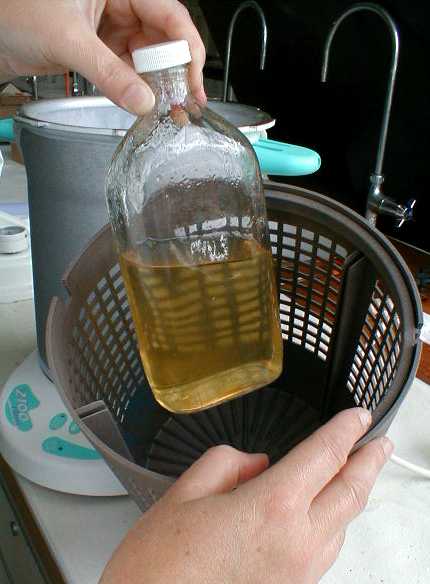Instructions regarding quantities are found on the containers of commercial media.
Solid media can also be made by adding agar to broth.
Materials
- Nutrient agar powder
- Spatula
- Weighing boat
- Weighing scales
- Measuring cylinder
- Distilled water
- Heat resistant gloves
- Eye protection
- Autoclave tape
- Autoclave or pressure cooker
- Water bath
- Marker pen
- Bottles
Instructions
- Wear a lab coat and use eye protection. Wear heat resistant gloves when handling hot equipment.
- Calculate the volume of agar required for the number of plates needed (18 – 20 cm3 per plate).
- Calculate the weight of dry medium necessary to make up that volume (see container to calculate correct weight).
- Measure out the weight of nutrient agar powder you have calculated.
- Add agar powder to the required volume of distilled water in an appropriate bottle (e.g. media bottle, medical flat).
- Place caps on bottles loosely.

- Autoclave at 121°C for 15 minutes.
- Cool to 55°C in a water bath.
- Using aseptic technique , dispense into sterile plastic Petri dishes (see Pouring plates ).
Add agar powder to the required volume of distilled water
Each bottle should contain no more than 500 cm3 agar. This is the maximum volume that can be sterilised safely.
Cool to 55°C in a water bath
If the agar is not required immediately, it can be cooled and stored till required. Tighten lids as soon as agar has cooled and store for up to three months. When required, loosen lids slightly and melt the agar (heat to 100°C in a water bath or autoclave then cool to 55°C and pour plates as normal).
Using aseptic technique
When pouring large numbers of plates from a bottle, the operator must decide whether to flame the neck between each plate or at the start and end. There is a trade off between speed of the operation and flaming which depends on circumstances such as skill of operator and work area. After pouring, plates can be stacked to reduce the amount of condensation which forms on the lids. Placing two spare plates, each almost full of hot water (just off the boil) on the top of the stack, will reduce condensation still further.



